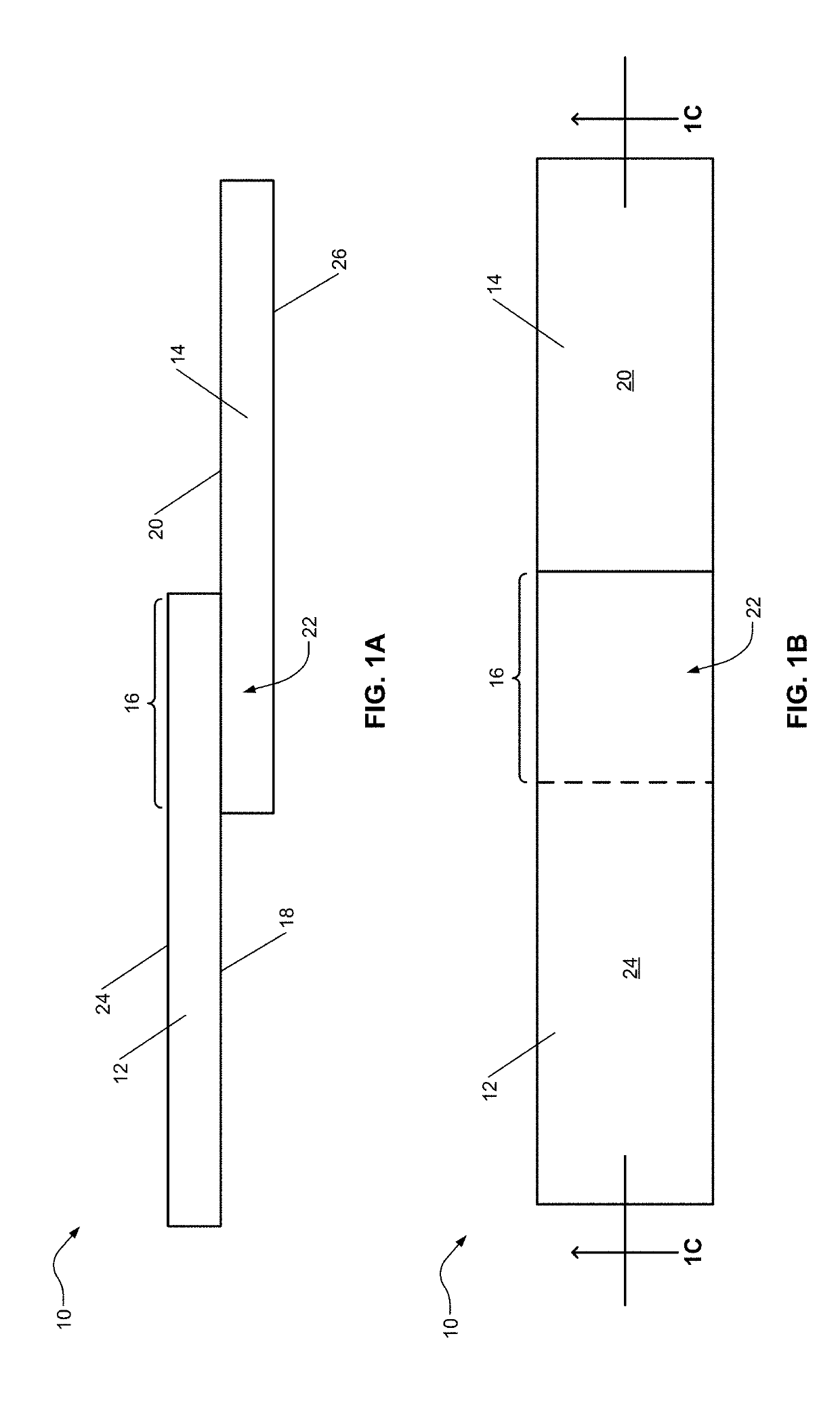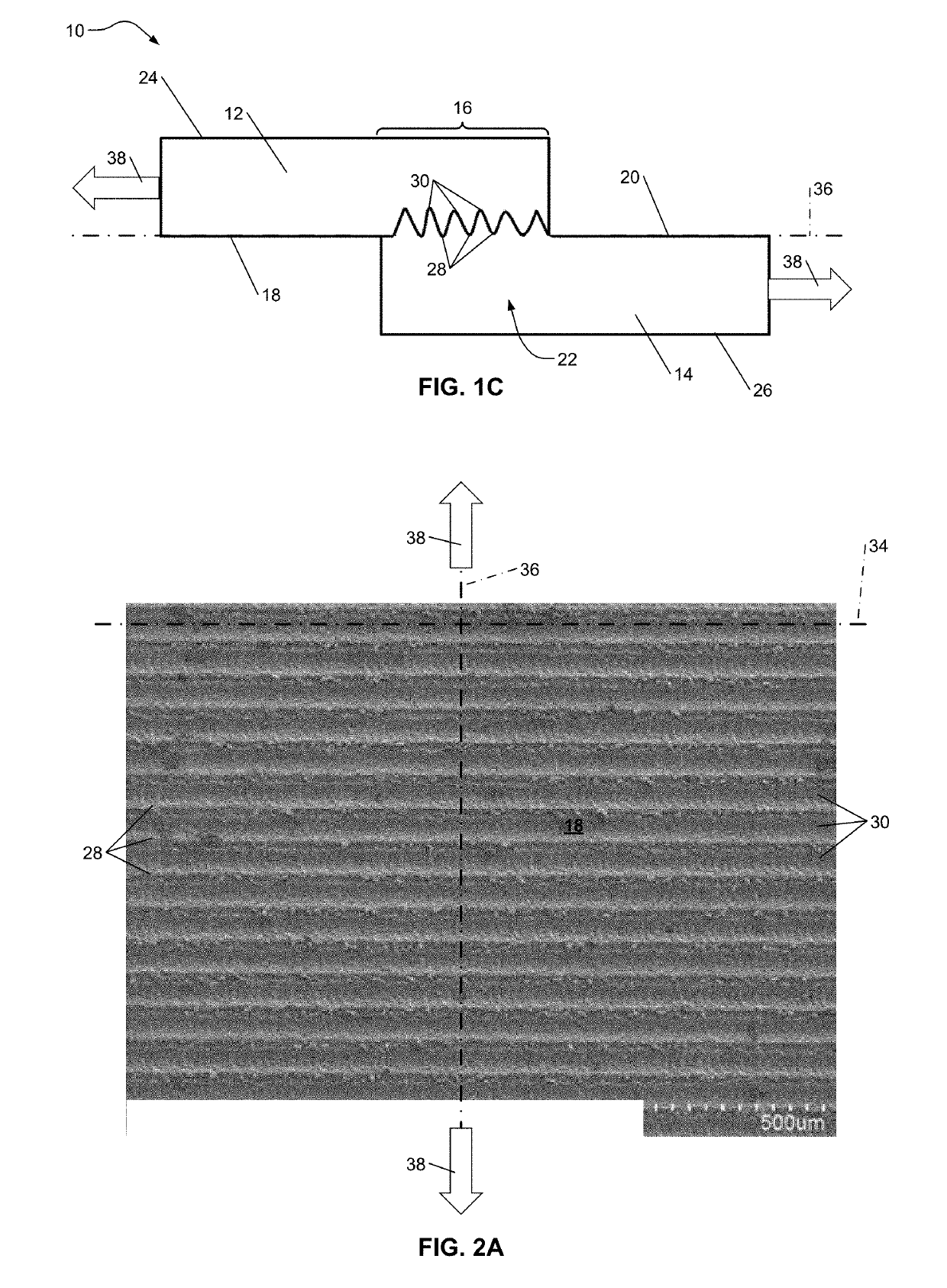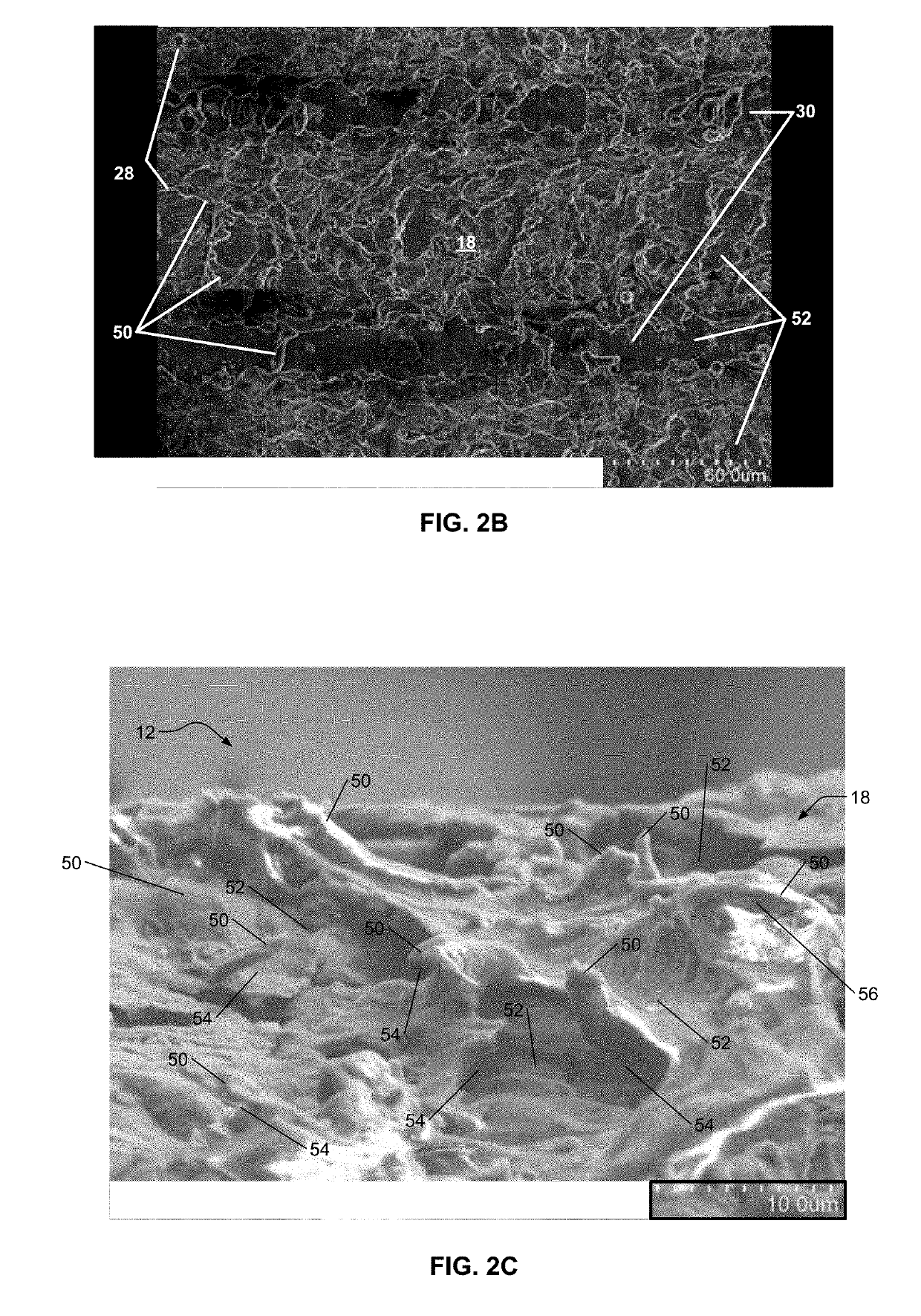Laser-induced micro-anchor structural and passivation layer for metal-polymeric composite joining and methods for manufacturing thereof
a technology of metal-polymer composite and passivation layer, which is applied in the field of metal-polymer composite joint, can solve the problems of difficult or infeasible molding of large parts, difficulty in manufacturing certain components, and difficulty in manufacturing large parts from reinforced composite materials, and achieve the highest laser fluence, facilitate the formation of aluminum oxide (al2o3) passivation layer, and facilitate the effect of forming large-scale components
- Summary
- Abstract
- Description
- Claims
- Application Information
AI Technical Summary
Benefits of technology
Problems solved by technology
Method used
Image
Examples
example 1
on Layer
[0083]Referring now to FIG. 10, a first sample includes an aluminum component without a laser-treated surface. A second sample includes an aluminum component that has a laser-treated surface. X-ray photoelectron spectroscopy (XPS) is performed on the first and second samples to obtain depth profiles. An x-axis 180 represents depth measured in nanometers (nm) from a first surface (similar to the first surface 18) toward a third surface (similar to the third surface 24). A y-axis 182 represents an atomic percent of various components.
[0084]A first XPS depth profile 184 represents aluminum content in the first sample. A second XPS depth profile 186 represents oxygen content in the first sample. A third XPS depth profile 188 represents aluminum content in the second sample. A fourth XPS depth profile 190 represents oxygen content in the second sample. The atomic percentages shown for the first and second samples may not add up to 100% because XPS depth profiles of other componen...
example 2
ap Shear Strength and Degradation of Lap Shear Strength Over Time
[0086]With reference to FIGS. 11-14, a first sample includes a metal-polymeric composite assembly having an aluminum component without a laser-treated surface. A second sample 200 includes a metal-polymeric composite assembly having an aluminum component that has a laser-treated surface. A third sample includes a metal-polymeric composite assembly having a stainless steel (316 stainless steel) component that has a laser-treated surface. Each of the first, second, and third samples includes a carbon-fiber reinforced nylon (nylon 6) composite having greater than or equal to about 20% and less than or equal to about 40% carbon fiber by weight.
[0087]Lap shear testing is performed to determine the lap shear strength of each of the samples. Similar samples are aged to test for corrosion. Referring to FIG. 13, an x-axis 210 represents age in years. A y-axis 212 represents lap shear strength in kN. A first curve 214 correspond...
PUM
| Property | Measurement | Unit |
|---|---|---|
| spot size | aaaaa | aaaaa |
| scan speed | aaaaa | aaaaa |
| power | aaaaa | aaaaa |
Abstract
Description
Claims
Application Information
 Login to View More
Login to View More - Generate Ideas
- Intellectual Property
- Life Sciences
- Materials
- Tech Scout
- Unparalleled Data Quality
- Higher Quality Content
- 60% Fewer Hallucinations
Browse by: Latest US Patents, China's latest patents, Technical Efficacy Thesaurus, Application Domain, Technology Topic, Popular Technical Reports.
© 2025 PatSnap. All rights reserved.Legal|Privacy policy|Modern Slavery Act Transparency Statement|Sitemap|About US| Contact US: help@patsnap.com



